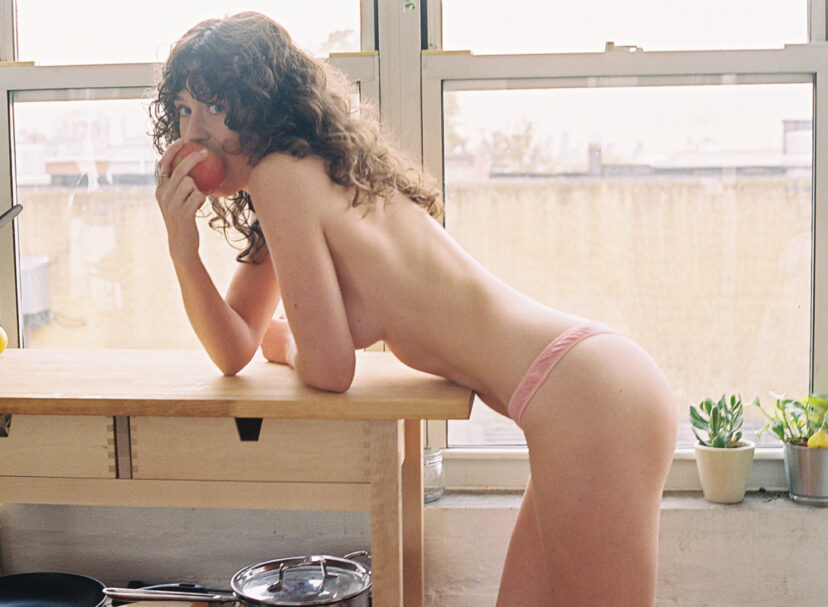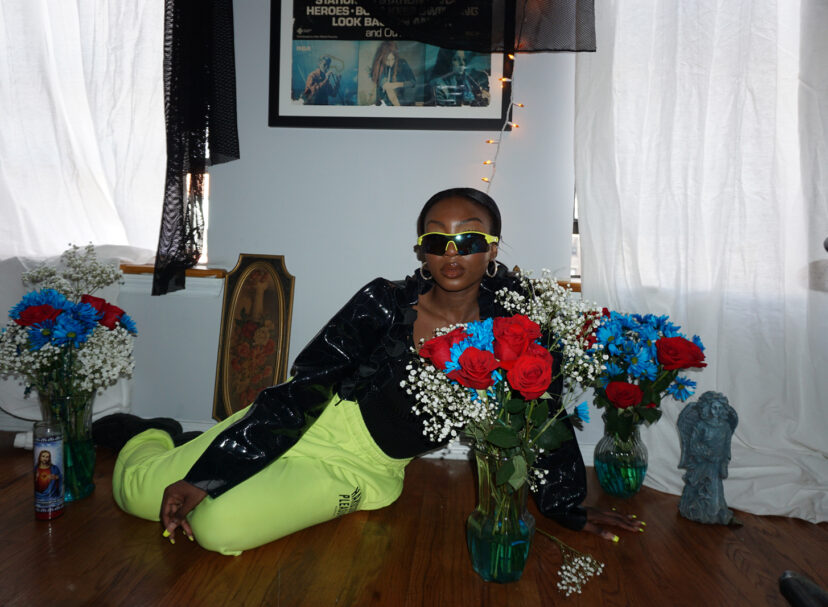Text by Alec Coiro
Video by Joe DeNardo
Susan Cianciolo presented her latest collection at Maryam Nassir Zadeh’s store in the Lower East Side. The models — including Susan’s six-year old daughter and her friends — were dressed at Susan’s home in Fort Greene before the show, and the presentation and collection all felt like an extension of her home, both because of the hand-made feel of the pieces and the inviting sense of participation at the show.
The models entered the store, emerging from the cabs in waves, joining the ever-growing procession participants circling the center of the store. After the final cab load of models was integrated into the circle, Susan and her team began taking recruits from the crowd to wear her pieces and become part of the show. One popular recruitment technique was to drape a quilt over audience members. These quilts — attractive in their own right — served as metonyms for the overall patchwork style of the collection. Indeed, the very process of bringing new people into the procession was a kind of live action quilting of people into the show.
The presentation was accompanied by the music of a gong. The gong paired nicely with the traditional Japanese elements in many of the pieces. There was also pie baked by Claire, a former student of Susan’s at Pratt, prepared from a suitcase full of blueberries Claire had just flown back from Oregon.
In the ’90s Susan was known for her line, Run, and the association with the ’90s persists. However, Susan represents an aspect of that decade that cannot be part of the ’90s-retro phenomenon because she deals with elements of the ’90s that are not commodifiable; her collection recalls the aesthetic of photocopied zines and mixtape cover art, an aesthetic that repurposed available technology for the DIY counter culture. The pieces in this collection are all hand-made and one-of-a-kind. Indeed, the radically hand-made style of the pieces intentionally resists reproduction, and, perhaps, the notion of mass production itself.
Susan’s work treads the line between chaos and control. Her use of graphically hand-sewn applique, for example, contrasts with the feminine elegance of the garment’s form. The collection and the presentation continually play with dichotomies. Susan’s work is intimately feminine but also innocent; it is subversive but non-confrontational. It is a rave but without the ecstasy/techno hangover. The line between model and audience is erased. Beauty itself is democratized and becomes the province of all.
In the end, the quilts were lifted over the models’ heads like dancing Chinese dragons celebrating life, or a secular chuppah marrying disparate people, or like a quilt stitching us all together.


